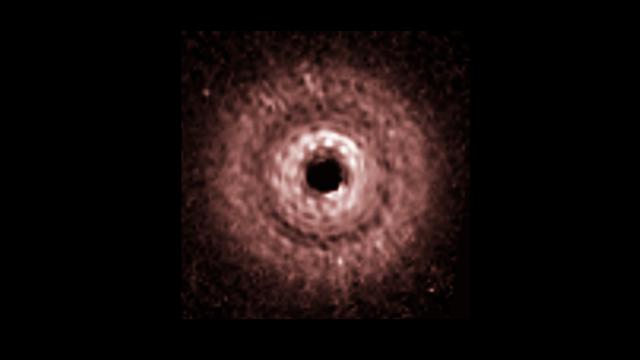Scientists believe they may have stumbled upon a planet that currently circles its sun at twice the distance Pluto’s does ours. And should they be able to confirm that, yes, this is in fact a planet we’re dealing with, astronomers may have to redefine the entire way we think about planet formation.
In images captured by the Hubble telescope, scientists were able to clearly identify a gap in the distant star’s dusty shell of space debris — and normally, this gap would be a telltale sign of a planet’s orbital path. Which wouldn’t be anything of note if not for the fact that this gap measures at 12 billion kilometres from the star, and according to the current theory of planet formation, that shouldn’t be possible.
Because planets are believed to begin as incredibly small, incredibly hot speeding balls of dust and gas that move within the huge cloud of debris around newly born stars. As this developing planet flys around the star, it slowly picks up the debris in its path, growing in size and clearing itself a nice, clear path of orbit. But at the distance this current potential planet is (which is 80 times farther from its star than Earth is from our sun), it would be highly unlikely for the planet to pick up enough material to clear out a path of orbit.
There is another currently accepted theory of planet formation in which balls of gas rapidly collapse together, similar to the way that stars are currently believed to form. But planets born this way would need to be massive — larger than Jupiter, even. And the shadow we’re seeing of this planet’s path only accounts for it being a little larger than the size of Earth. So either way, astrophysicists may have their work cut out for them. According to John Debes, an astronomer at the Space Telescope Science Institute in Baltimore:
No matter how you look at it, if there’s a planet there it’s going to change theories of how planets form.
But the one key ingredient that’s missing her is identifying an actual planet, and the Hubble telescope is almost 20 years old. Debes compares identifying the gap in the star’s space to debris to “seeing a groove in an LP record from 6km away.” So it’s more likely that the next class of giant space ‘scopes will be the one to tell us whether it’s time to start rethinking everything we thought we knew about how baby planets are born. [Science News]
